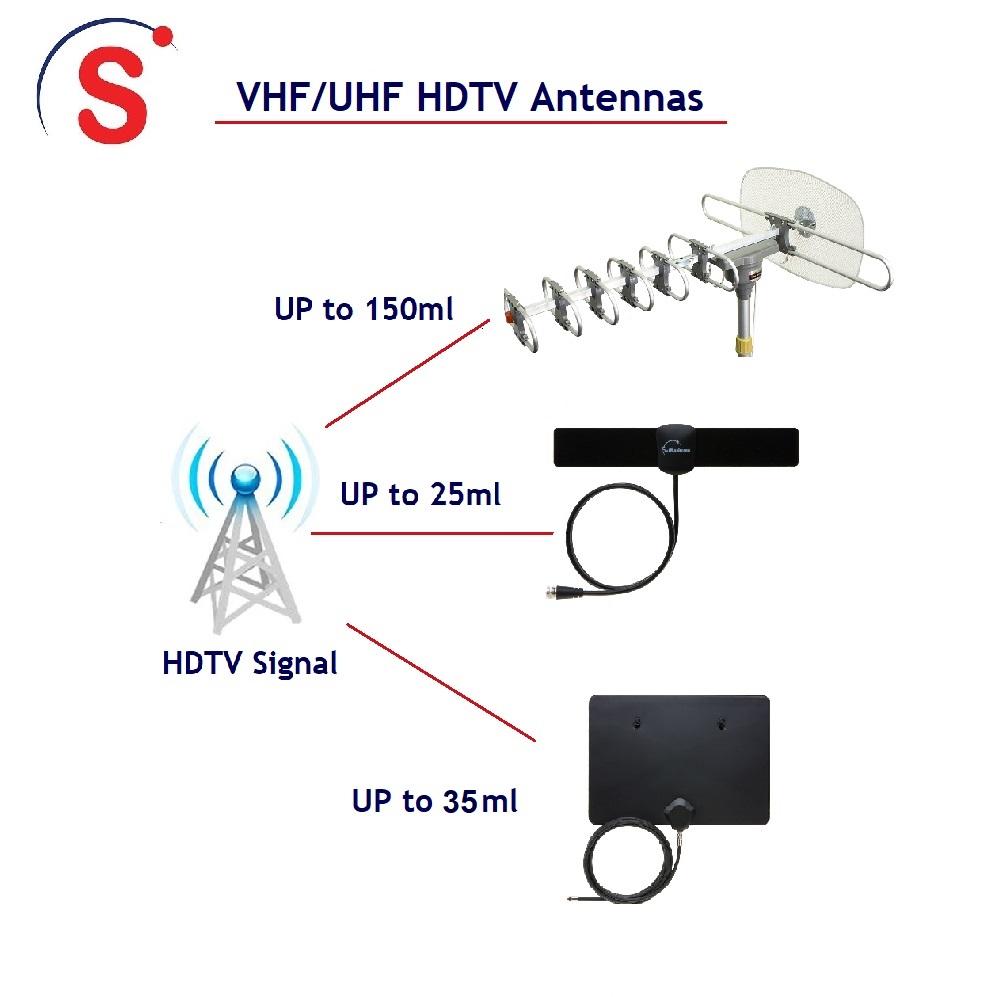TV Antenna Guide - Types, Range & Reception
One of the best ways to quickly and easily save hundreds of dollars each and every year is to install a TV antenna and cut the cord with your digital cable provider. Most of the United States actually has between 50 and 100 stations being broadcast over the airwaves at any one time - and this is offered entirely for free.
If you’re worried about the quality of the signal, don’t be. Interestingly enough, the TV signals that are coming over the air are actually completely uncompressed unlike the signals traveling through your cable modem or coming through to your satellite. For this reason, the quality coming from a TV antenna is always better than the quality from your dish or cable, meaning that not only are you saving tons of money, but you’re also optimizing your TV quality.
You also don’t have to worry about there being plenty of channels to watch. Thankfully, all the major broadcasting networks you have come to know and love are transmitting their signals in high-definition. They are even working on improving these signals, conducting tests around the country to meet the newest standards. There is even talk that broadcasting will eventually be in 4K.
These days, almost all of us have a wide range of streaming subscriptions. This can make it hard to justify the cost of cable TV when we are already paying so much, except for when we want to watch live news or weather updates during stressful times. Thankfully, with a digital TV antenna, you can get those live updates for free while paying for the streaming services that have the content that you actually want.
The Ultimate TV Antenna Guide
Now that you know the value of a TV antenna, let’s talk about how to make sure that you are purchasing the right one for your area and for your setup so that you can get free television stations right to your TV quickly and easily.
The Difference Between Indoor and Outdoor Antennas
Indoor and outdoor antennas are exactly what they seem. If you live in a metropolitan area, you likely are very close to many different signals, so an indoor antenna near a window will do you just fine.
| 150ml Outdoor HDTV Antenna | 25ml Indoor HDTV Antenna | 35ml Indoor HDTV Antenna | 45ml Indoor HDTV Antenna |
|---|---|---|---|
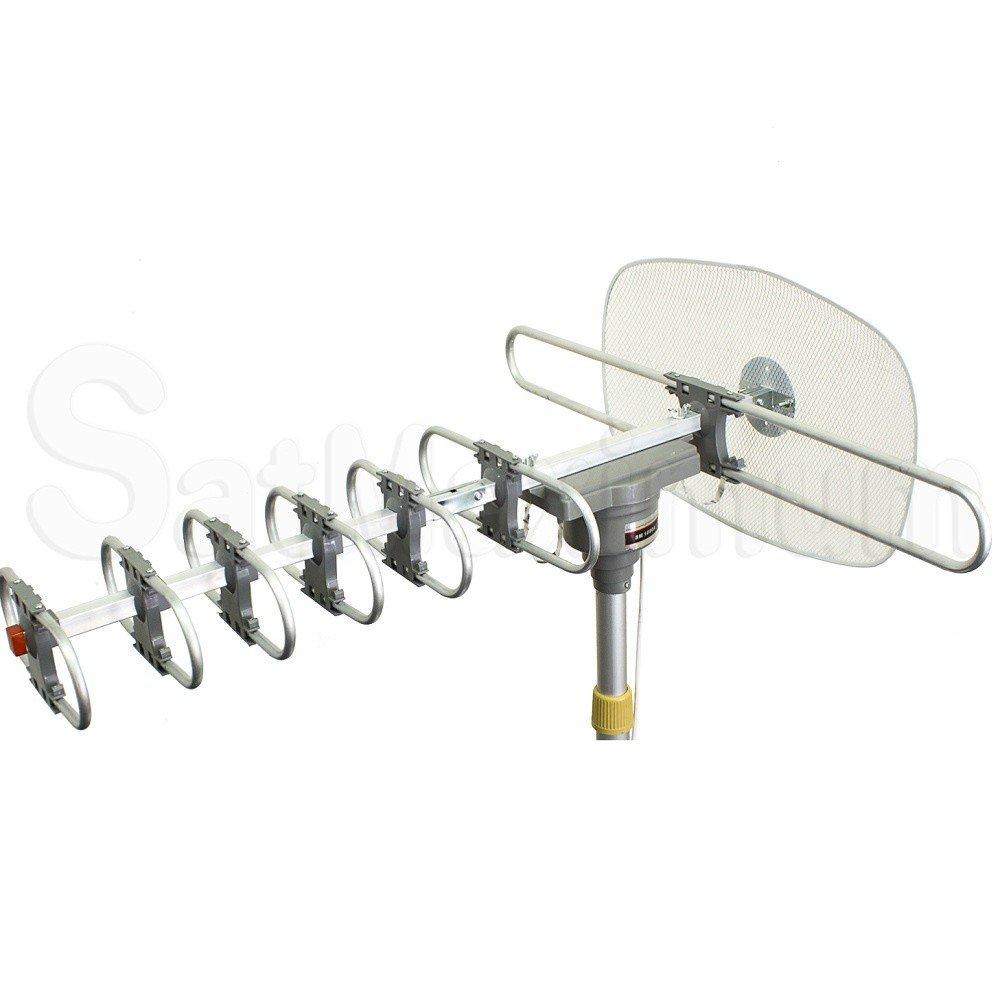 | 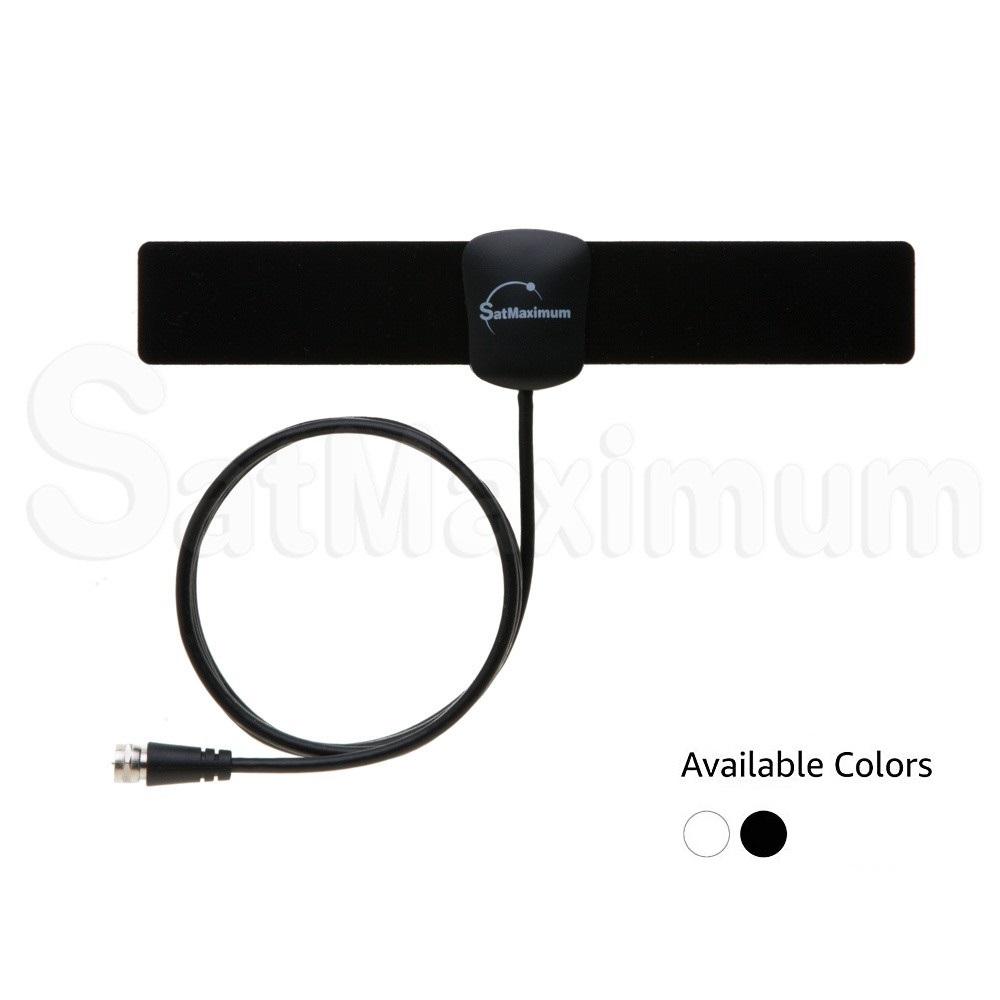 | 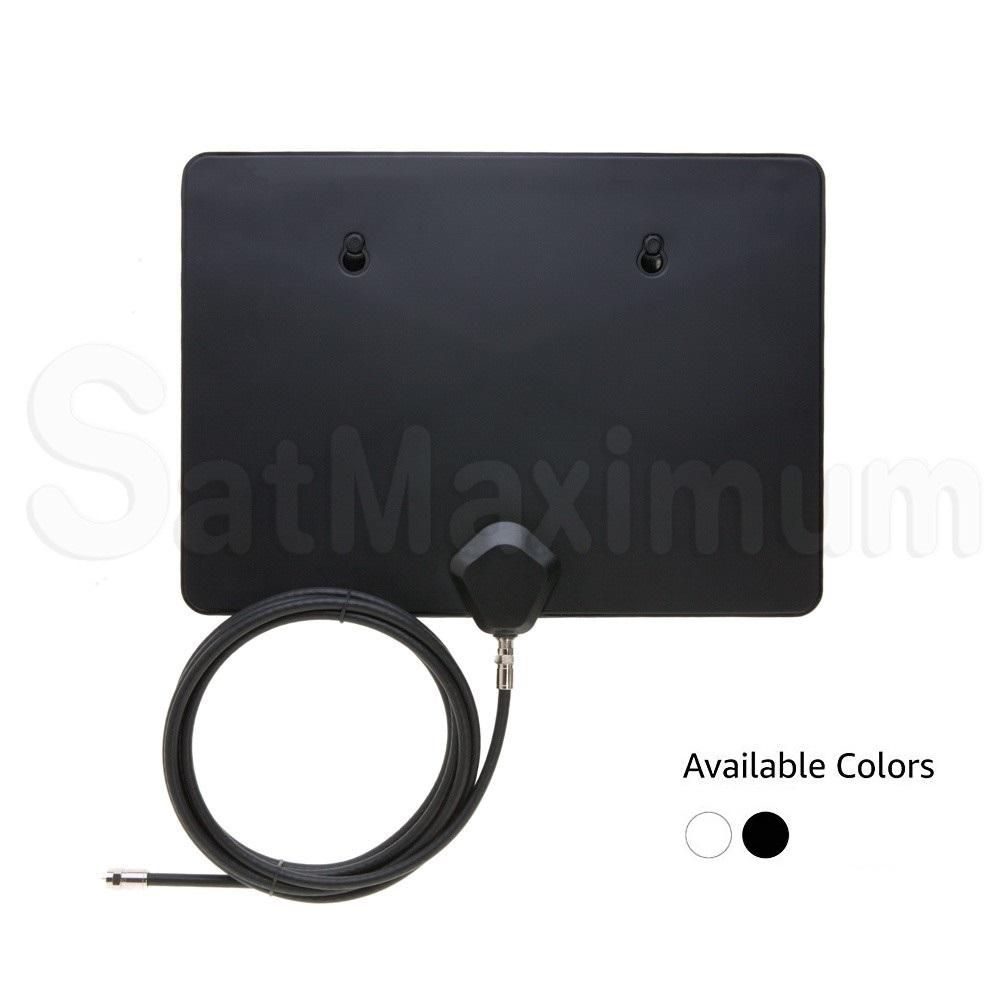 | 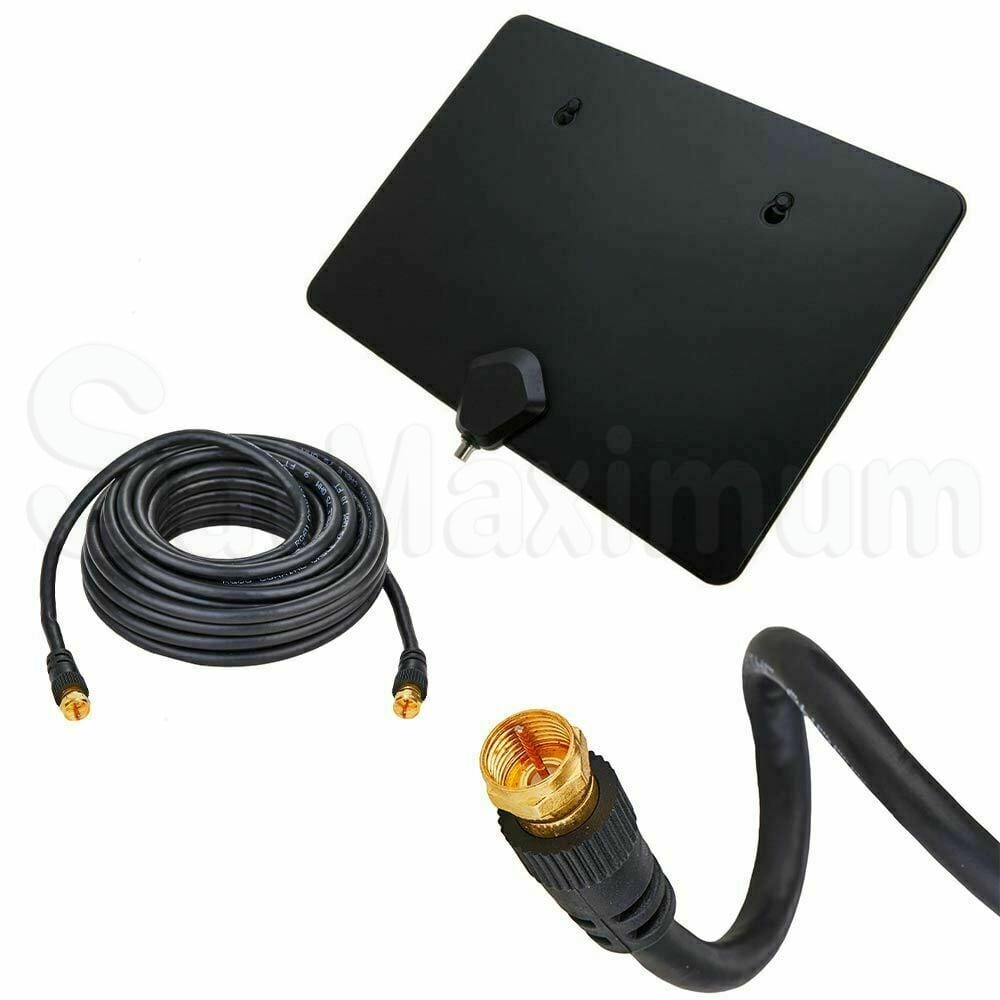 |
However, if you are farther out, you may need to get an outdoor antenna that is mounted to the roof of your home in order to get a strong signal. This will all be determined based upon how close you are to the towers that are transmitting the signal as well as if there is any terrain that is in the way between your house and the transmission point. Thankfully, mounting a tv antenna to the roof can help circumvent these distancing issues.
Frequency Bands: The Difference Between VHF and UHF
An antenna that has multiple director elements, also known as rods, will help you receive more channels. The number of elements and the spacing of those elements is part of the equation that determines the gain as well as the directivity.
The driven element is open in the center of the boom for connection directly to the coaxial cable feed. The local electromagnetic fields serve as the basis for which the other elements are able to couple with. This induces currents within the elements. The gain of each dipole multiplied by the number of elements is what determines your approximate maximum gain.
Now, let’s talk about the different frequency bands. You will see two different options being offered across the market, VHF and UHF. Most of the time, these are offered together.
VHF Frequency Band
A VHF frequency band has longer elements. The longer elements help ring in the lower channels like channels 1-10. If these are the channels you need, make sure that your setup includes VHF.
UHF Frequency Band
The shorter elements make up the UHF frequency band. These elements bring in higher channels 14-51. Sometimes, different elements are included in order to improve these singles such as bow-tie elements or circle elements.
Choosing The Right Antenna Based On Elements
As you could easily gather, you are going to want to get an antenna that has a various mixture of different elements which is going to help you capture as many channel frequencies as possible.
When looking for these, larger antennas that are uni-directional are usually the type of antennas that offer the best mixture of elements.
The Importance Of Antenna Location And How It Affects Reception
Below, we will go over the different types of antennas and what kind you will need based on how close you are to the broadcasting towers and where those towers are located in relation to you.
However, before we get there, it is important to stress that antenna location will greatly affect the type of reception that you are going to get and how many channels are available to you.
The best option will be to get an outdoor antenna that you can put on the roof. This will not only give you a better range and potentially more stations, but it will also improve the signal quality which will give you a better picture.
Outdoor antennas are also generally larger, so the increased diversity of elements within them will help you get more channels, as well.
Range and Reception of Antennas
Here is a quick guide about the range and reception of antennas and what is possible based on the distance and location of the broadcasting towers in your area.
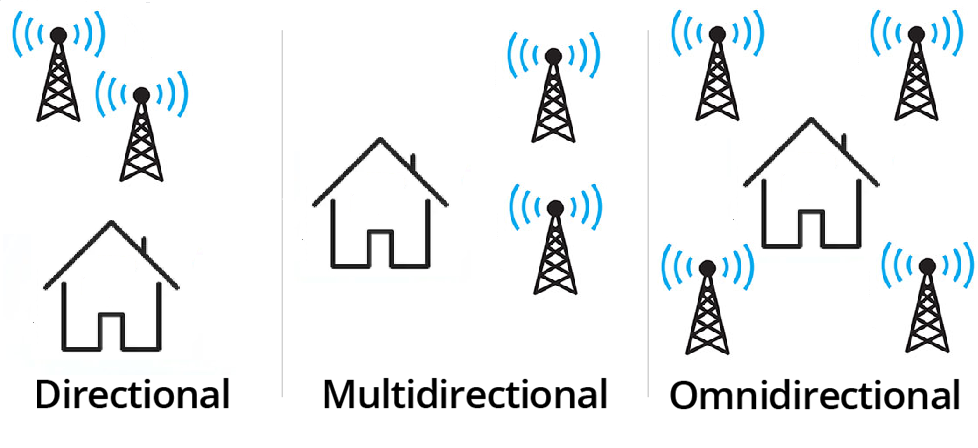
All Towers In A Single Location
You can get an omnidirectional antenna if the towers are all clustered in a single location within 50 miles. If the distance is greater, you will need to get a directional antenna.
Towers In Multiple Locations
If towers are grouped in two locations, you will need a multi-directional bay-type antenna.
Towers Scattered Around Your Location
An omnidirectional antenna is best for scattered towers. However, these towers need to be within 50 miles of your location. If the distance is greater, then you will need to get a directional antenna that has a remote-control antenna rotator so you can pick up different stations at-will.
Learn more about real antenna range in What is the real TV Antenna range and other facts.
What channels will I receive ?
Most people in North America will receive all the major networks - ABC, CBS, NBC, Fox, PBS, CW, and many Others. You will receive many popular shows along with sporting events and local news.
How to find Local TV Channels available in my area?
You can check available stations in your area by using DTV Reception Map. Enter your Zip code and get available channels with color-coded signal strength indicators.
- Most Green - An Indoor Antenna will do just fine to pick up these channels
- Green and Yellow - You will need an amplifier or outdoor antenna
- Yellow and Orange - You will need an Outdoor Antenna
- Orange and Red - We would recommend you to try FREE TV Over the Internet
Which direction do i point my antenna?
To check TV signal direction, click on the stations call letters on the left side of the DTV Reception Map. The map will then show the TV transmitter towers with a black line to your location. Please see example below. 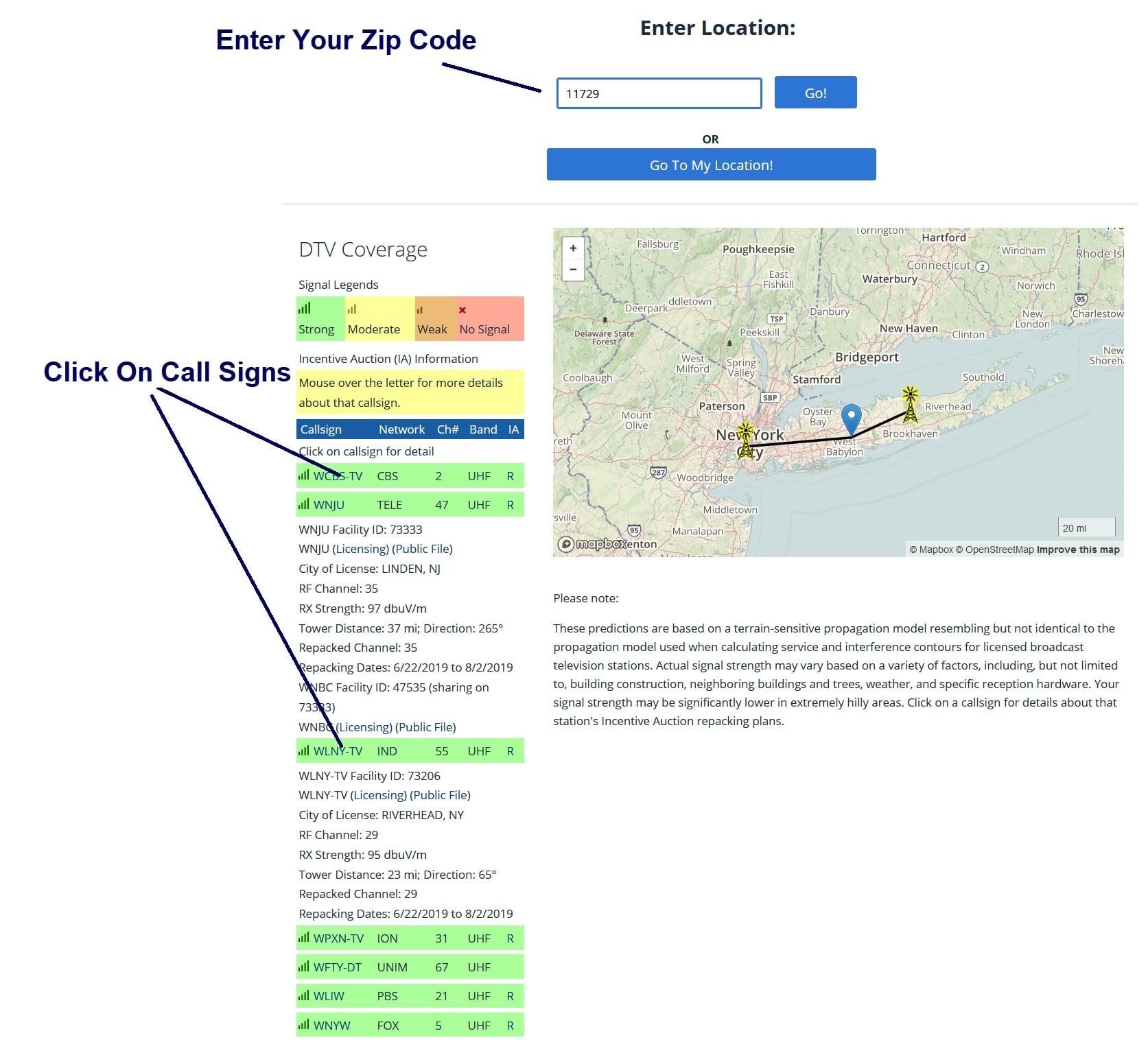
Read Tips on how to install an Outdoor TV Antenna for more useful installation tricks.















































